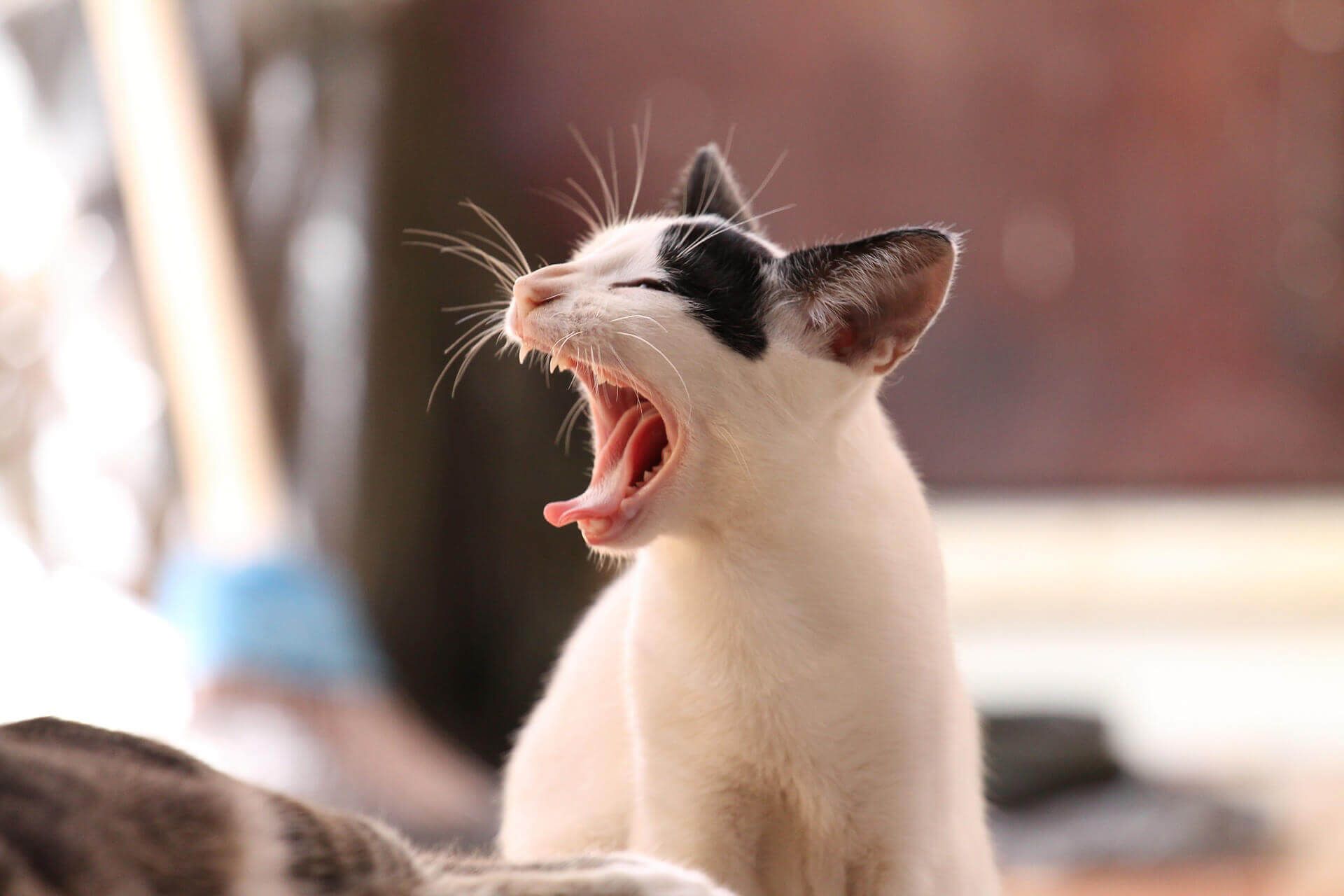What might be causing my pet to lose weight?
How can we determine the cause of weight loss in my pet? Weight loss may be caused by physical problems in grasping, chewing, and swallowing food. It may be related to problems of inadequate nutrition because of increased energy requirements; for example due to rapid growth, increased levels of exercise, pregnancy, or lactation (nursing). A poor quality diet may result in weight loss. And finally, underlying medical conditions such as hyperthyroidism in cats, Addison’s disease in dogs, disease in the kidney, heart, liver or intestines, or cancer, may cause significant weight loss.
A thorough history and physical examination will provide us with some initial “clues”; for example, a cat with a mass in the neck region will increase our index of suspicion for thyroid disease, whereas abnormal heart or lung sounds suggest underlying cardiovascular disease. Often the cause of the weight loss will not be evident on physical examination alone, and a series of screening tests will be recommended. These screening tests include a complete blood count (CBC), a serum biochemistry profile, a urinalysis, fecal flotation, and evaluation of thyroid hormones in cats.
What might these screening tests indicate?
The complete blood count provides us with an evaluation of the red blood cells, the white blood cells, and the platelet components of a blood sample. This numerical analysis is accompanied by a microscopic evaluation of these cells on a blood smear.
Anemia may accompany many of the diseases that result in weight loss. The degree of anemia is often related to the severity of the underlying disease. The type of anemia and therefore the underlying cause of the weight loss may be suggested by examination of the blood smear. As one example, anemia due to chronic intestinal or urinary tract blood loss is characterized by small red blood cells containing less hemoglobin than usual.
Underlying inflammatory or infectious conditions may be suggested by increases in the white blood cell numbers. The appearance of atypical or unusual white blood cells might be indicative of underlying bone marrow or other neoplasia (cancer).
The serum biochemistry profile provides us with an evaluation of many organ systems including the liver, kidneys, and pancreas. In addition to organ related enzymes, the biochemistry profile evaluates blood sugar (glucose), proteins, cholesterol, and electrolytes.
Increases in the liver related enzymes alanine aminotransferase (ALT), alkaline phosphatase (ALP), and gamma glutamyltransferase (GGT), are suggestive of underlying liver disease. Mild increases in ALT and ALP in cats may also be supportive of thyroid disease. A marked increase in serum glucose concentration, especially if accompanied by the finding of glucose in the urine, is supportive of diabetes mellitus. Changes in the electrolyte (salt and mineral) composition of blood may be suggestive of underlying Addison’s disease.
Decreases in the serum proteins, namely albumin and globulins, may be the result of either blood loss or loss of protein via the intestinal tract or kidneys. When protein values are decreased, it is important to know what the CBC results are so that blood loss as a cause of protein loss can either be confirmed or eliminated.
The biochemistry profile provides us with an indication of kidney function by measuring two metabolites that are usually cleared from the blood via the kidneys. These metabolites are urea and creatinine. Increases in urea and creatinine are associated with kidney disease or with dehydration. In order to determine which might be the cause, the concentrating ability of the kidneys must also be assessed. Such an assessment is provided by the urinalysis.
A urinalysis provides us with an evaluation of the chemical and physical characteristics of a urine sample. It is essential to properly interpret any changes found on the serum biochemistry profile. Knowledge of the urine concentration, as well as urine glucose concentration, is vital in the diagnosis of kidney disease, and diabetes mellitus, respectively.
A fecal flotation simply requires a fresh stool sample. This sample is evaluated microscopically for the presence of intestinal parasites. Intestinal parasitism is more common in young animals and in those eating raw foods (such as cats that hunt). A large parasite burden may cause weight loss.
The majority of cases of hyperthyroidism can be diagnosed using a single blood test that measures the total thyroxine (T4) concentration.Because hyperthyroidism in cats is due to the unregulated production of thyroid hormones (primarily T4), the blood T4 concentration is usually markedly elevated in cats with the disease.
What additional tests might be indicated for the evaluation of weight loss?
Any additional testing that may be recommended will depend entirely on the combined results of the history, physical examination, and initial screening tests.
Given the many possible causes of weight loss, it is not possible to list all potential additional tests. However, a few of the more common additional tests are listed below:
- In cats, underlying viral disease due to feline leukemia virus or feline immunodeficiency virus should be investigated. This requires a single blood sample.
- If hypoadrenocorticism (Addison’s disease) is suspected, then confirmation of this disease will require an ACTH stimulation test.
- Determination of the serum fructosamine concentration may be done to confirm diabetes mellitus.
- Serum bile acid concentrations are often used to confirm hepatic dysfunction.
- Problems with digestion of food due to deficiencies in pancreatic enzymes may be confirmed with a serum trypsin-like immunoreactivity test.
- A urine Protein: Creatinine ratio may be indicated to quantify the amount of protein being lost in the urine.
- Imaging studies such as x-rays or ultrasound may be undertaken if a tumor is identified. X-rays will also help us to evaluate the contents of the chest or abdominal cavity.
- Fine needle aspiration or other biopsy techniques may be employed to obtain cells from any enlarged organs or masses.
- Electrocardiophic studies might be indicated if abnormalities in heart size, rate, rhythm, or sounds are identified.











